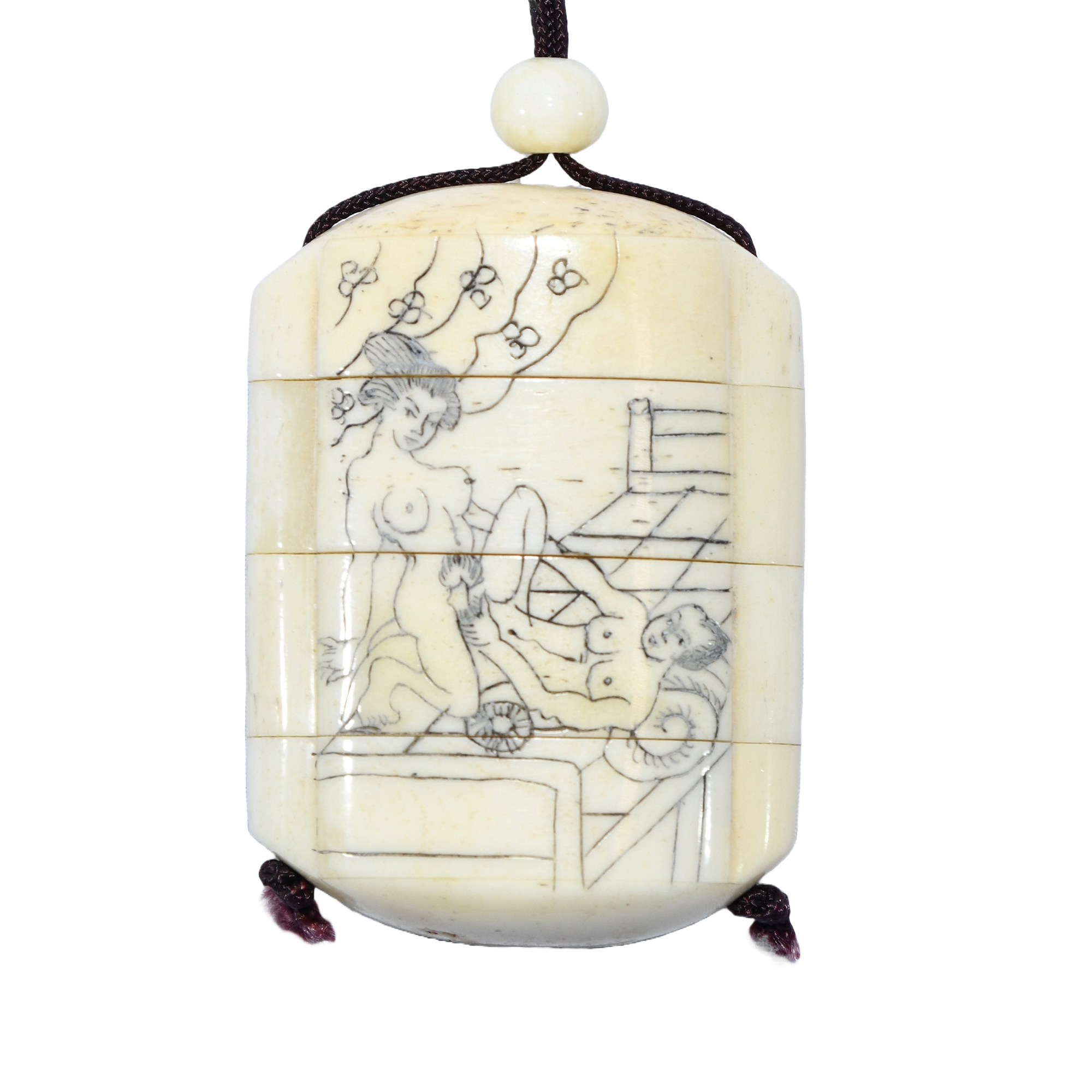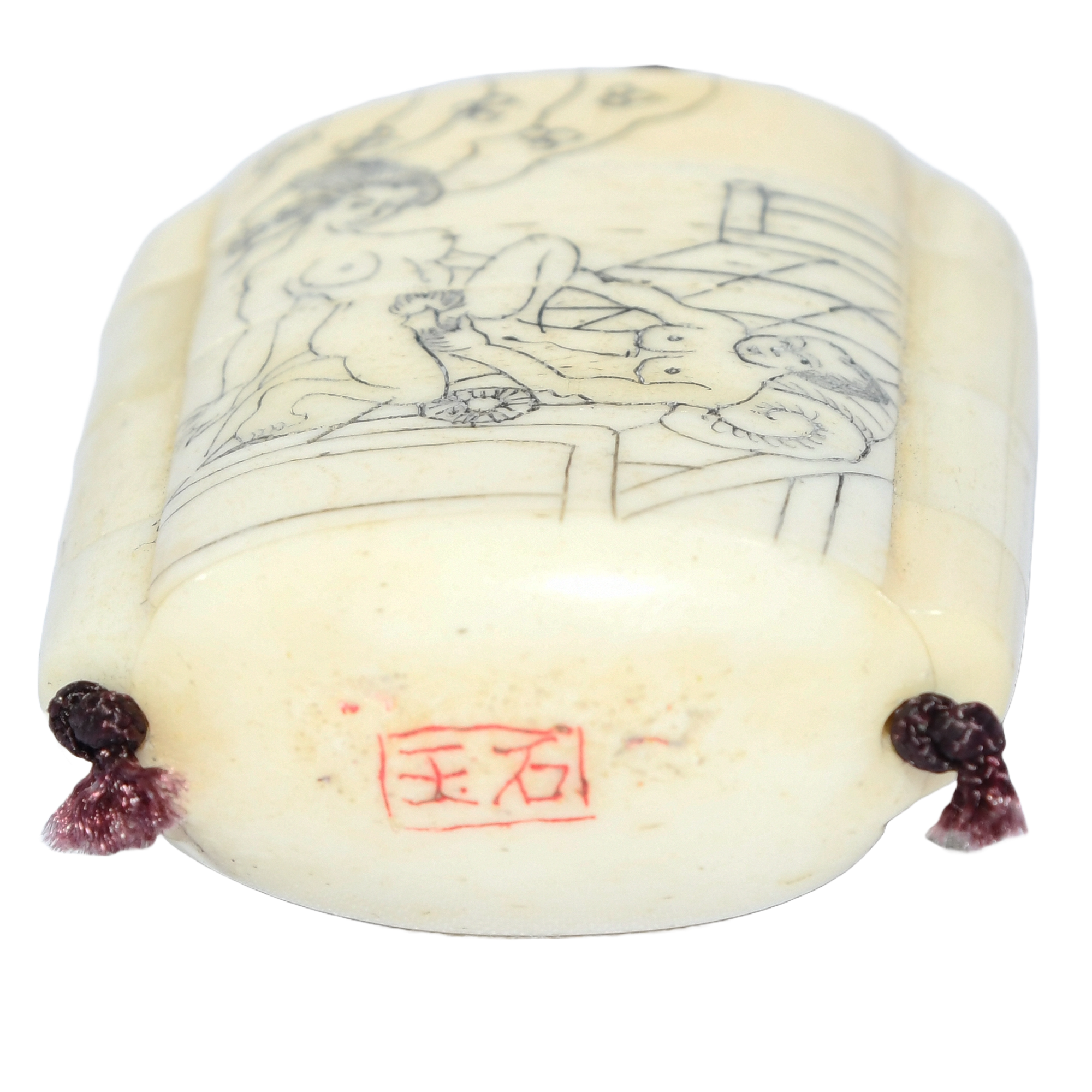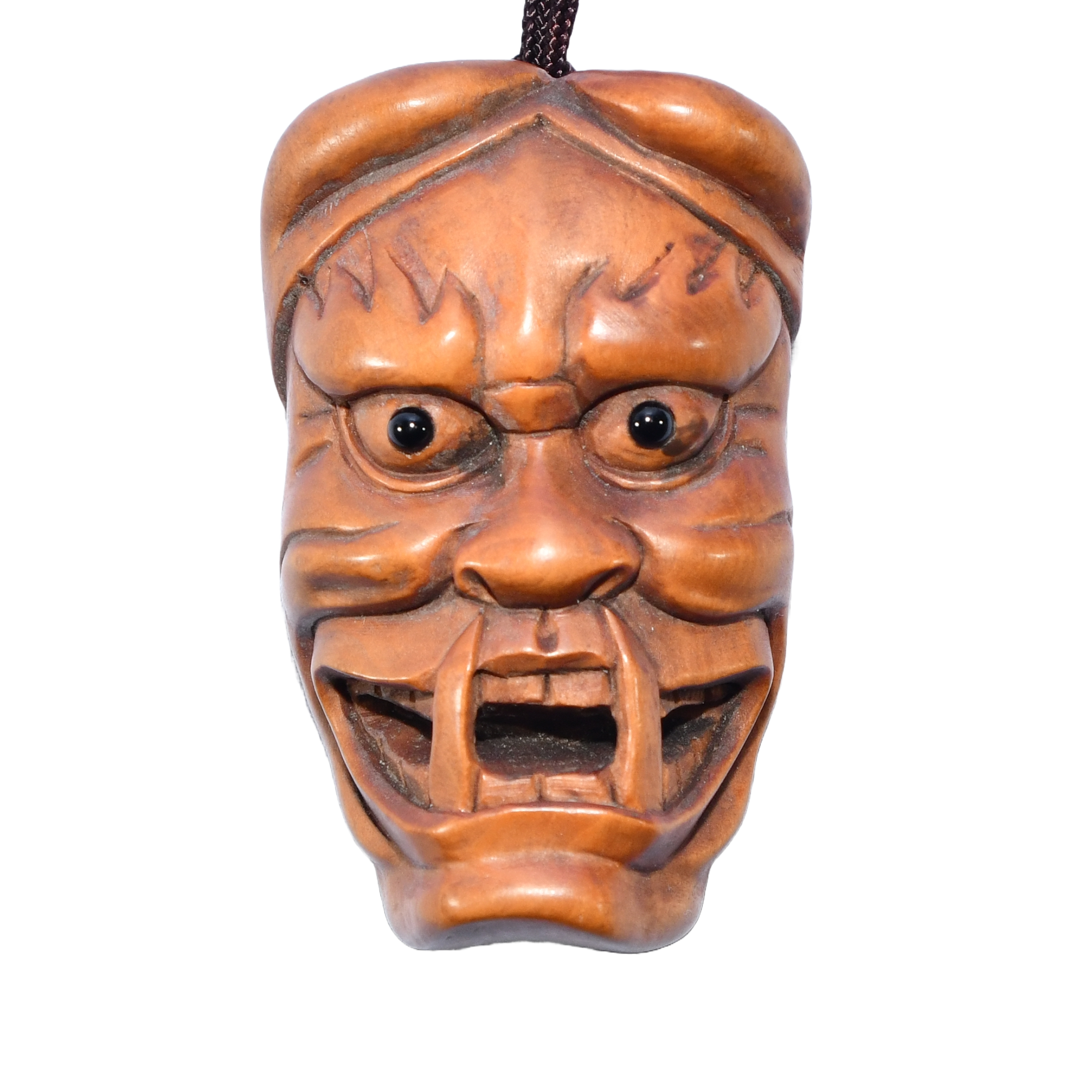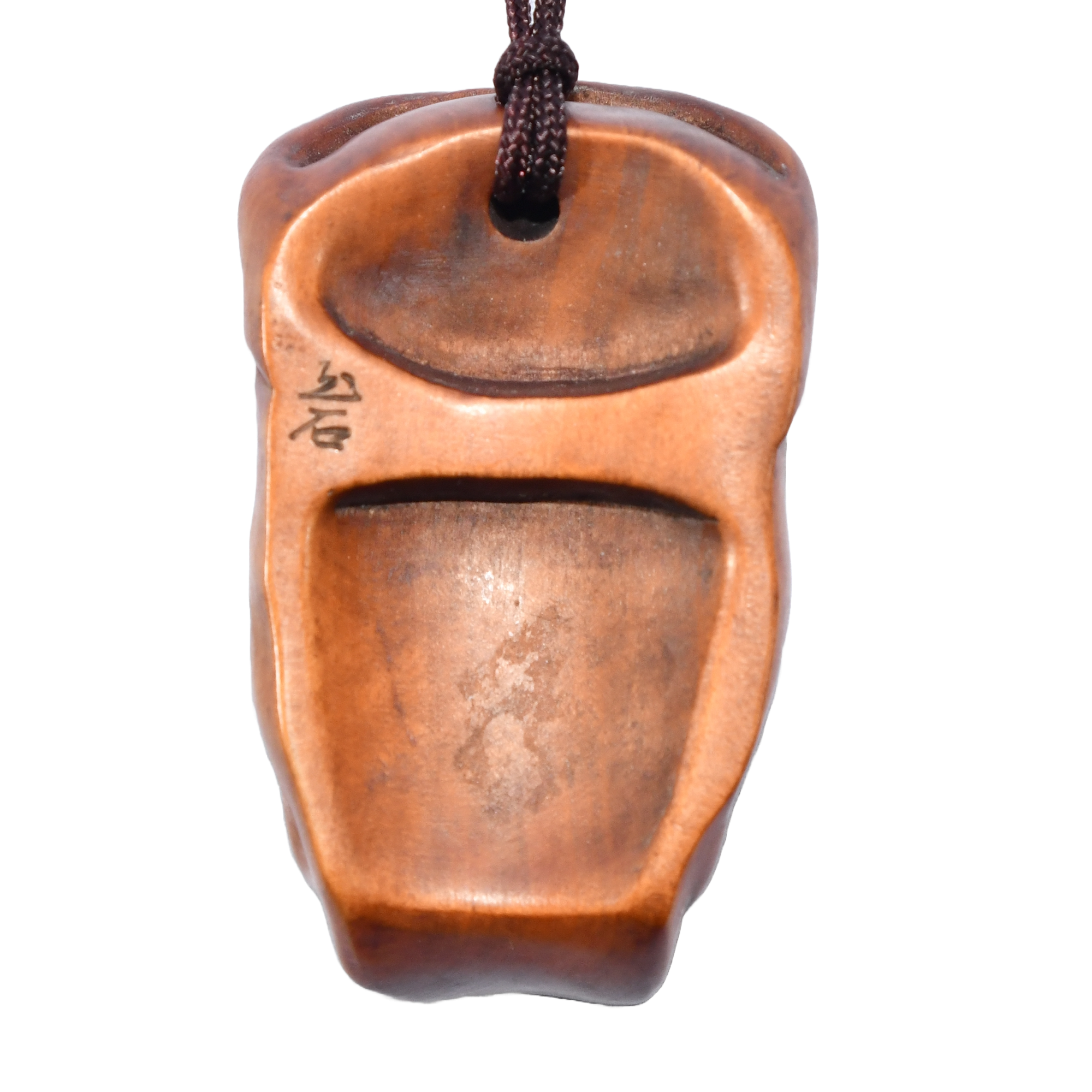Japanese erotic Inro with a Oni “demon” netsuke
Japanese erotic Inro with an Oni “demon” netsuke
Date: inro 19th century
Date: Netsuke early to mid 20th century
Geography: Japan
Culture: Japanese
Dimensions: full length with cord 48cm L inro 5.5cm L 4cm W x 2cm D.
Netsuke 5cm L 3cm W x 2cm D.
Weight 60g
Material info bone
Material Netsuke boxwood
Condition is very good
The Japanese bone inro is a meticulously crafted, handmade artifact dating back to the 19th century. Comprising two compartments, it traditionally served as a vessel for carrying medicine. One side feature delicately carved erotic scene while the reverse depicts an erotic scene, showcasing the rich artistic diversity of Japanese craftsmanship.
Accompanying the inro is a boxwood oni netsuke, likely originating from the early to mid-20th century. The netsuke, intricately carved with an ONI or "demon" motif, is believed to have served a protective function. These miniature sculptures were essential elements of traditional Japanese dress, specifically worn on a cord alongside the inro, and tethered by an A ojime.
Together, the inro and netsuke formed an integral part of a kimono ensemble, providing both functional and aesthetic value. The exquisite detailing and cultural significance of these artefacts reflect the profound artistry and craftsmanship embedded in Japanese heritage during the specified historical periods.
Japanese erotic Inro with an Oni “demon” netsuke
Date: inro 19th century
Date: Netsuke early to mid 20th century
Geography: Japan
Culture: Japanese
Dimensions: full length with cord 48cm L inro 5.5cm L 4cm W x 2cm D.
Netsuke 5cm L 3cm W x 2cm D.
Weight 60g
Material info bone
Material Netsuke boxwood
Condition is very good
The Japanese bone inro is a meticulously crafted, handmade artifact dating back to the 19th century. Comprising two compartments, it traditionally served as a vessel for carrying medicine. One side feature delicately carved erotic scene while the reverse depicts an erotic scene, showcasing the rich artistic diversity of Japanese craftsmanship.
Accompanying the inro is a boxwood oni netsuke, likely originating from the early to mid-20th century. The netsuke, intricately carved with an ONI or "demon" motif, is believed to have served a protective function. These miniature sculptures were essential elements of traditional Japanese dress, specifically worn on a cord alongside the inro, and tethered by an A ojime.
Together, the inro and netsuke formed an integral part of a kimono ensemble, providing both functional and aesthetic value. The exquisite detailing and cultural significance of these artefacts reflect the profound artistry and craftsmanship embedded in Japanese heritage during the specified historical periods.
Japanese erotic Inro with an Oni “demon” netsuke
Date: inro 19th century
Date: Netsuke early to mid 20th century
Geography: Japan
Culture: Japanese
Dimensions: full length with cord 48cm L inro 5.5cm L 4cm W x 2cm D.
Netsuke 5cm L 3cm W x 2cm D.
Weight 60g
Material info bone
Material Netsuke boxwood
Condition is very good
The Japanese bone inro is a meticulously crafted, handmade artifact dating back to the 19th century. Comprising two compartments, it traditionally served as a vessel for carrying medicine. One side feature delicately carved erotic scene while the reverse depicts an erotic scene, showcasing the rich artistic diversity of Japanese craftsmanship.
Accompanying the inro is a boxwood oni netsuke, likely originating from the early to mid-20th century. The netsuke, intricately carved with an ONI or "demon" motif, is believed to have served a protective function. These miniature sculptures were essential elements of traditional Japanese dress, specifically worn on a cord alongside the inro, and tethered by an A ojime.
Together, the inro and netsuke formed an integral part of a kimono ensemble, providing both functional and aesthetic value. The exquisite detailing and cultural significance of these artefacts reflect the profound artistry and craftsmanship embedded in Japanese heritage during the specified historical periods.








